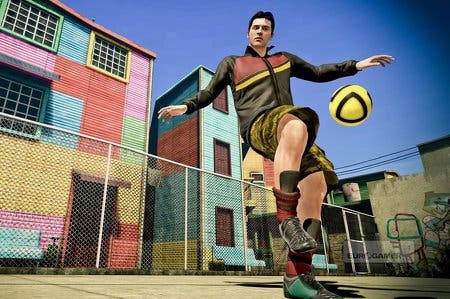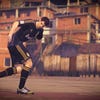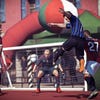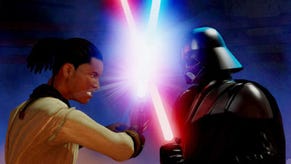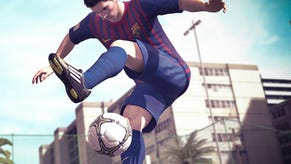FIFA Street Review
Let's be avenue.
While the FIFA series itself has long since shed its reputation as the glitzy but superficial alternative to proper football simulations, the same cannot be said for FIFA Street. As recently as 2008, when the main FIFA series was already well in the ascendancy, FIFA Street 3 was picking up lukewarm write-ups that faintly praised its "shallow, unpretentious fun" before giving it 6/10 for being, well, glitzy but superficial.
There's no sign of a "4" on the end of this edition, and if we had to guess why then we'd suggest it's because EA Sports has ripped things up and started almost completely anew. The objective is still to deliver flashy street football full of tricks, feints and individual skill, but the basis this time is less SEGA Soccer Slam or Mario Strikers Charged and more FIFA 12 with the trick stick dialled up to 11. The power bars and signature trick kicks are gone and replaced with something that's more like a simulation.
This is still heavily exaggerated football where every little thing you do is straight out of a Nike advert, but it's much more grounded in reality. This is perhaps best illustrated by your most obvious new tool: a close-control shoulder button that plants your standing leg and lets you swizzle the ball around with your other foot using the left analogue stick, dragging it this way and that and pivoting to shield yourself from attackers. With a quick tug of the sprint button you can then escape smoothly in any direction, gliding into space and sometimes breaking out a 'panna', or nutmeg.
There are a few other basic tricks, like a juggle button that sometimes lets you flick the ball over an opponent's head and run past him, and a modifier button that adds a flashy twist to basic passes, lobs and shots, turning them into extravagant Rabona leg-twists and scoops. But the rest of your work is done with the right stick, using a range of increasingly complex fighting game-style gestures that break out all sorts of deception and finesse. You can rainbow-flick the ball over your own head from behind with a simple left-then-right gesture, for example, or you can rotate the stick in a 180-degree arc from up to down to perform a flip-flap. There are tons and tons of subtle variations to help bamboozle opponents.
The framework for the rest of the game is straight out of FIFA 12, with a couple of minor deviations. The physicality of the game is very familiar thanks to the use of EA's Impact Engine, which means that there will be some comical collisions and physics-defying trips and mid-air pirouettes from time to time (most of which are enjoyably silly rather than annoying). More importantly, it means that the rebooted FIFA Street is the first game in the series that achieves the tactility and heft of a real football simulation.
FIFA 12's Tactical Defending also makes it across, meaning that your basic defensive option is to contain movement by 'jockeying' at a distance of a few paces from an attacker, before using a standing tackle button to stick a foot out to pinch the ball. Forcing this style of defending on players was likely to prove divisive with FIFA 12, so EA allowed you to switch back to the old style, but FIFA Street does not. Fortunately it's easier to get the hang of in the close confines of street pitches, basketball courts and five-a-side Astroturf than it is sprinting around the San Siro or Wembley Stadium.
The main differences, then, are the removal of slide tackling, which would allow players to steamroller anyone in possession and thus ruin the entire basis of the game, and a slight loss of manoeuvrability. Perhaps because the tackling is so rigidly based on standing up and patiently waiting for an opening, your movement away from the opposition goal when in possession seems to be restricted, so you can't squirrel around on the edge of the box as you might in FIFA 12. This forces you to engage with the trick system, at least.
And that's handy, really, because while passing the ball around is perfectly viable, this isn't a game of dragging people out of position and exploiting space; it's a game of beating the man in front of you. The deeper you dig into the single-player campaign, or the more you play with friends, the more it becomes clear that zippy passing moves and slide-rule through balls aren't really available to you here. This is much more like attacking the key in basketball - a pass is mostly made to change the angles and give you a new line of attack. The way to succeed is to learn the tricks, the motions for which are drummed into you every time you pause, view stats or wait for something to load.
In many respects, this is the FIFA Street we were all asking for - or at least the one that I was back in 2008. "There is a great, great game yet to be made in this subset of the football sub-genre, where the depth of a beat-'em-up lurks beneath accessible showboating," I wrote of FIFA Street 3, "but this isn't it." Four years later, the new FIFA Street pretty much is.
A few seconds swotting up on the close-control button is enough to enjoy a great game with friends - a bit like the first time you played Street Fighter 2, when all you knew was the fireball move - but over time you can become a real magician. Sure, you'll probably rely on the fireball equivalents (the simple panna and the aerial flick) when you're up against it, but when you're on level terms or a goal ahead, out come the tricks, and they work.
FIFA Street isn't a shallow game in structural terms either. The World Tour mode offers a mixture of challenges and tournaments and lets you build a team as you go, levelling up, specialising and recruiting bested foes, and it blurs the line between online and offline too, downloading the real teams of other players to fill out your campaign. Multiplayer pickings aren't that slim either, with online divisions and cups to graduate between and the option to build custom rule-sets for your matches.
That's because not every match here is created equal. There are basic five-a-side and six-a-side options in walled arenas, but you can also play Futsal (no walls, bigger goals and fouls are penalised - they never are elsewhere), Last Man Standing (each time you score you lose a player and the winner is the team reduced to zero first), and a couple of showboating modes. My favourite is probably Panna, a two-on-two mode where you earn points each time you beat an opponent - more so if you do it with a panna or aerial flick - and then bank them by scoring in a small net. Doing so gives you a potentially big score and wipes out any points the opposing team hasn't banked.
It's all a far cry from the shallow, ultimately tedious displays we've come to expect from this series, and that's hugely welcome. There are still some things to work on for next time - the trick selection is quite deep, for example, but in practical terms there is only a marginal difference between one step-over and the next when you're out on the pitch - but for the first time in this glitzy little sub-series, we will be very happy when the next time rolls around. This is still unpretentious fun, but now it's also a surprisingly deep and characterful little sports game, and a welcome stopgap between FIFA 12 and 13.
